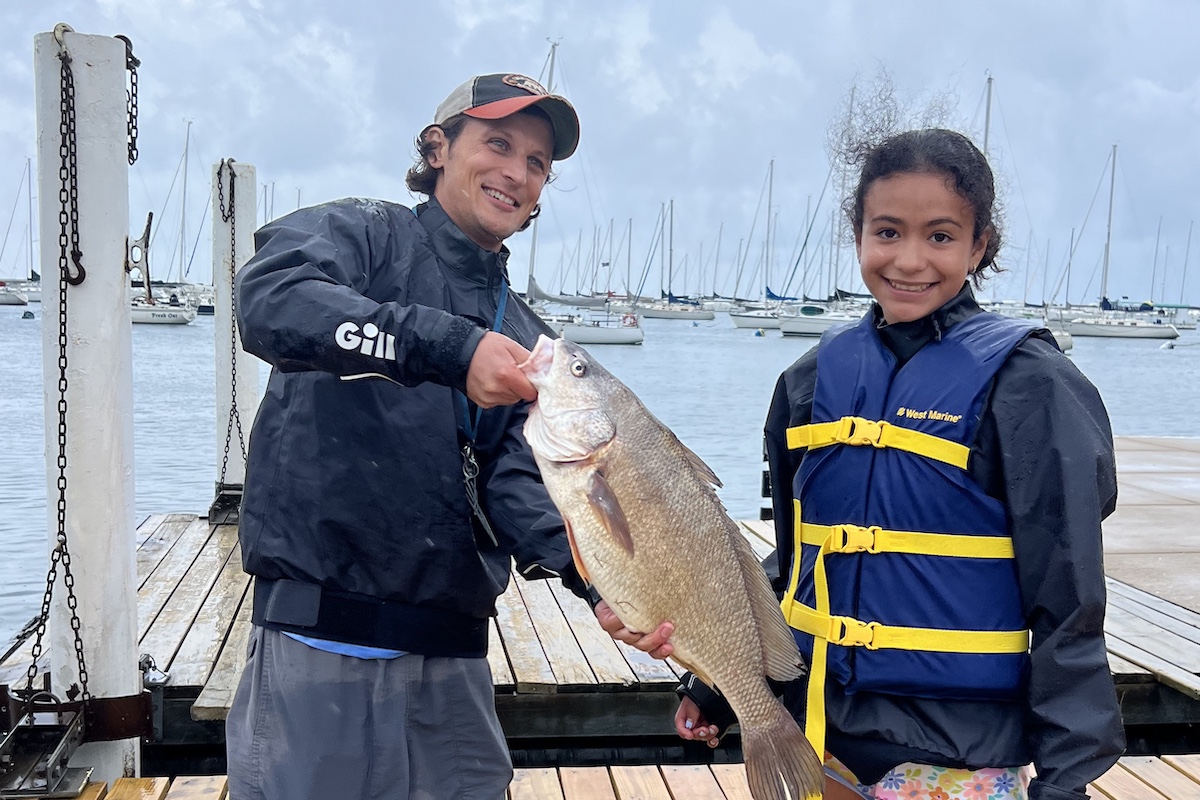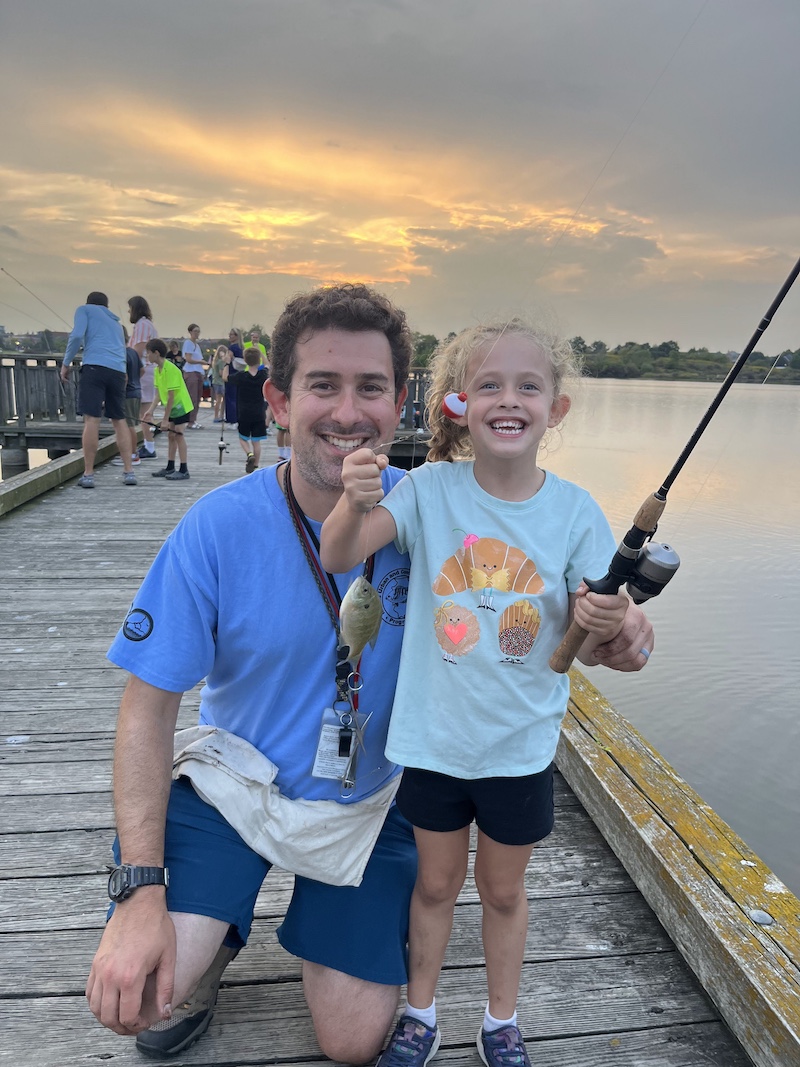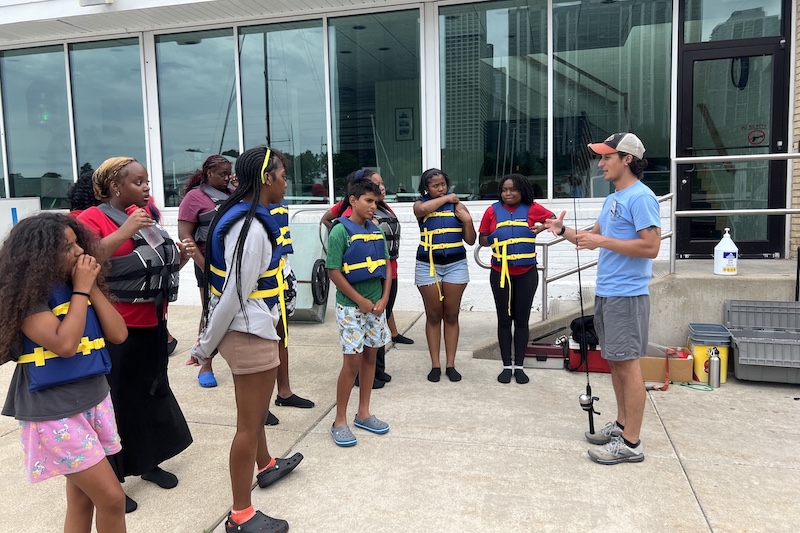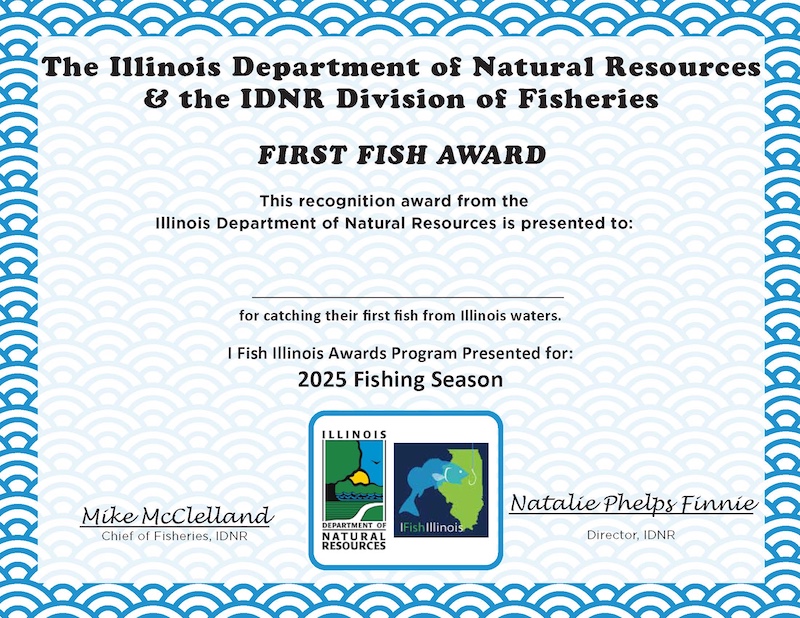
Dalia (right) and Michael Kamp (left) with Dahlia’s first fish, a freshwater drum. Photo courtesy of the Chicago Yacht Club Foundation.



Dalia (right) and Michael Kamp (left) with Dahlia’s first fish, a freshwater drum. Photo courtesy of the Chicago Yacht Club Foundation.
Countless opportunities abound for adventure in nature and the outdoors. In the current digital age, it is more important than ever to step outside and connect with nature for people of all ages. That initial spark and connection can happen in many ways. Personally, I cannot pick one single thing that sparked my interest as I grew up fishing, birding, chasing frogs and salamanders, and paddling Wisconsin lakes – I call it a combined effort.
Walking through Chicago, surrounded by cement, miles of interstate, and skyscrapers, you might not think there is much to explore outdoors. Yet, despite the concrete jungle, there is no shortage of different opportunities to discover nature. This summer I worked for the Illinois Department of Natural Resources as a Conservation Education Representative (CER) for the Urban and Community Fishing Program in Chicago.
The Urban and Community Fishing Program began in 1985 with the goals to teach people of all ages to fish, to provide local fishing opportunities, and to give participants a greater appreciation for natural resources. Fishing clearly can catalyze people to spend time outdoors and appreciate natural resources.
I was fortunate to witness many people catch their first fish. For example, I was at Flatfoot Lake in Beaubien Woods in June where I helped a middle-aged man who had never fished before. Bluegills (Lepomis macrochirus) kept stealing the bait off the hook – not an uncommon occurrence but frustrating nevertheless. While telling him that I have fed hundreds of fish in my life, I explained how to set the hook. When the fish bites and you feel the rod bend, jerk your wrist back to set the hook in the fish’s mouth before reeling in.
Within two minutes, he set the hook in a bluegill and hauled it in. He proudly showed the fish to his wife and posed for a picture. When I asked how it felt to catch his first fish, he smiled and simply said, “It felt good, man.”
Fishing is not for everyone, but hopefully some people get “hooked” after catching their first fish and form a connection to the outdoors. Below are highlights of other first fish caught, including an impressive catch of the summer in Lake Michigan.
More than one new angler caught their first fish that sunny June day at Flatfoot Lake. A teenage boy cast his bobber far in hopes of catching his first fish ever. Following a rather epic untangling of line, he pulled in a sunfish. His description of the experience as “shocking” stuck with me. Another girl catching her first fish the same day merely shrugged her shoulders. The reactions varied quite a lot over the summer.
Some youth named their fish. After two girls pulled in their first fish, initially all I heard was “scary” and “ugly.” Not the most flattering descriptions for the state fish of Illinois. However, after calling the bluegill “scary,” one girl named her first fish “Jimmy.” Shortly afterwards, she caught a second fish and named it “Billy.” Perhaps overhearing her naming her fish, I heard another kid say, “I’m gonna’ name him Tommy.” Naming speaks to a connection between the kids and the fish.

Catching a first fish was also not bound by age, as I witnessed the experience from six-year-olds to retired veterans. Fishing at Marquette Park during a late June evening, I worked with a group of young adults. A young man, 21 years old, had never been fishing. The evening started slow, but when we moved to a new location, the action picked up. Soon enough, he caught a sizable hybrid sunfish. When describing how it felt to catch his first fish, I heard a familiar sentiment, “It feels good, man.”
A teenage girl, who never held a fishing rod before that day, caught a 16-inch channel catfish (Ictalurus punctatus). Once she released the fish, she said “I feel tough now.” The picture of her holding the catfish definitely gave that appearance. As the evening was wrapping up, I asked if any of them would fish again, and I was happy to hear a couple of assenting answers. As the young man described, “I thought fishing was hard, but it wasn’t that bad.”
In mid-July, I led a fishing program for a Chicago Park District Summer Camp at Riis Park. A group of four girls did not want to go fishing, but eventually one of them decided to give it a try. She caught a sunfish after patiently fishing for 15 minutes. When I asked her how she felt catching her first fish, she responded with one word, “Proud.”
I asked if she would go fishing again, and she responded in the affirmative. As the group was wrapping up their morning, I noticed her showing her friends photos of the fish she caught. Over the summer, it was inspiring to see people’s eyes light up when catching their first fish. No matter the size, catching a first fish can create an exciting connection to nature, but one first fish was the biggest.
The Urban and Community Fishing Program partnered with the Chicago Yacht Club Foundation for two fishing events at their location on Monroe Harbor. The foundation works with youth from underrepresented communities to teach them the joys and benefits of boating. In addition, they were able to teach fishing with our help.
The second fishing clinic with the Chicago Yacht Club Foundation was on a rainy Wednesday afternoon – July 30, 2025, to be exact. Despite the rainy conditions, the kids were not deterred. The Chicago Yacht Club Foundation generously provided rain gear, and we split into two groups.

We instructed the first group how to use the spin casting rods and bait their hooks with wax worms, and then they headed out on the pier to fish. Soon enough, a few kids were pulling up round gobies (Neogobius melanostomus). We explained that we do not throw the gobies back but rather place them in a bucket because they are an invasive species to Lake Michigan that negatively affect the native fish species. I fed the gobies to hungry ring-billed gulls after the clinic ended.
The rain kept falling, but the kids kept fishing. Two bluegills were hauled in that approached 9 inches. Another angler also caught three old cables from the bottom of Lake Michigan – I thanked him for cleaning our local great lake.
The second group came back from sailing, and it was their turn to fish. After the instructions, the youth grabbed their rods and spread out on the pier. Within three minutes, 12-year-old Dahlia, who had never fished before, said she had hooked a large fish. Looking up briefly, I noticed that she was in the same location where a boy had snagged the bottom three times already that day. Assuming a snag, I walked over.
Upon reaching Dahlia, she pointed down, and indeed there was an impressively large fish on her line. “What do I do?” she asked me. I said, “Keep reeling and keep the line taught,” fighting to keep my excitement hidden. Then, the fish swam under the pier and wrapped the line around a post. Determined not to lose the fish to a broken line, I grasped the rod and was able to untangle the line from around the post.

Handing Dahlia back the rod, I asked the Chicago Yacht Club if they had a net. Fortunately, they quickly grabbed a net with a long handle, and I got in position. A fellow CER, Kristin, coached Dahlia through fighting the fish – keep the line taught and try to steer the fish away from the pier posts. After two or three minutes, which felt much longer as the fish kept diving to deeper water, she guided the fish close to my net and the surface.
I swiftly netted the fish and pulled it out of the water. Immediately, I noted the heaviness of the fish, much heavier than any other fish we had caught so far that summer. The fish was a large freshwater drum (Aplodinotus grunniens), also known as a sheepshead or Gaspergoo. With the whole group as an audience, we took photos of Dahlia and her first ever fish. She beamed at the camera holding the net with the fish and later next to me holding the fish.
The freshwater drum was 25 inches long, and I estimated its weight at 6 to 7 pounds. Quite a remarkable first fish and hopefully an afternoon she will always remember.
Since witnessing many new anglers catch their first fish, I have not seen them again. I hope some of them were hooked on fishing with an indelible memory of their first fish or at least deepened their connection to nature. Whether you are an angler or not, going fishing is a great excuse to be outside.
Michael Kamp is an environmental conservationist who is currently working as a Conservation Education Representative for the Illinois Department of Natural Resources Division of Fisheries. Previously, he worked in outreach and communication for The Nature Conservancy, the Wisconsin Department of Natural Resources and the Nelson Institute for Environmental Studies at UW-Madison. A lifelong birder, he enjoys sharing his love of birds and nature with others.
Submit a question for the author